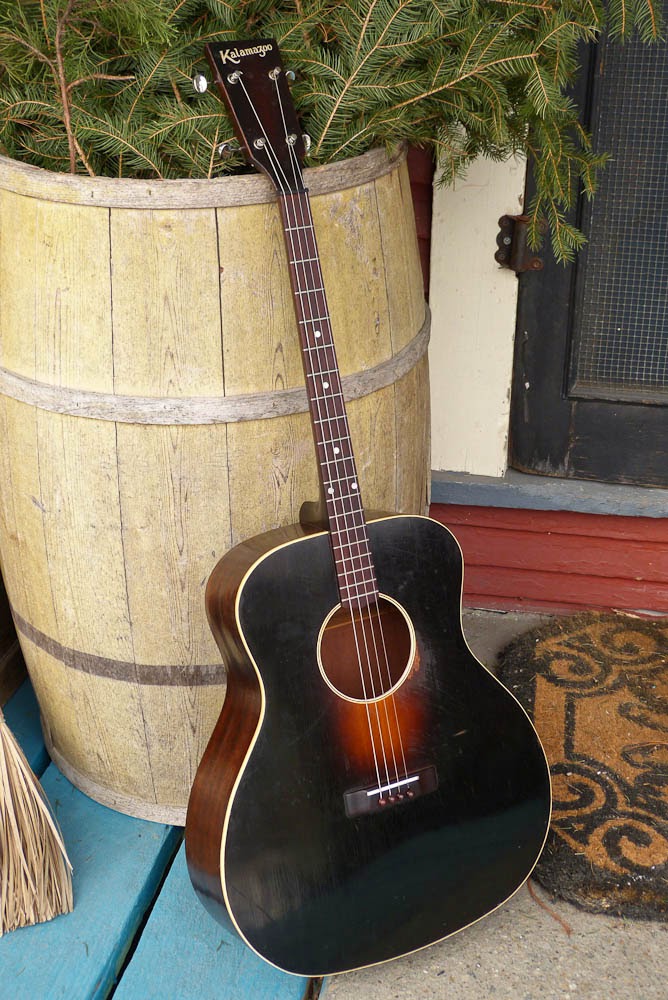c.1935 Gibson-made Kalamazoo KTG-11 Tenor Guitar
A customer brought this mid-30s Kalamazoo tenor guitar in for possible sale and I've just finished up work on it which included a bridge and saddle shave, seam and crack repairs/fills, a fret level/dress, and replacement pins and tuners. It's the same body as the more usual KG-11 "squashed 00 shape" guitars, though it's got an almost-15" lower bout at 14 3/4" wide.
This thing sounds tops and gives the Cromwell KG-14-style tenor guitar I had previously a really good run for the money. I think what's wonderful about these larger 1930s tenor designs from Gibson is that they tend to give enough bottom end warmth and focus to make the popular "octave mandolin" (GDAE) stringing option useful. I've currently got this strung up for that with a fairly light set (46w, 32w, 18w, 12) that works perfectly with the lightly ladder-braced top this guy has.
The bridge and board are Brazilian rosewood, the top is solid spruce, and the neck, back, and sides are all solid mahogany.
The simple, square-cut headstock on these Kalamazoos means installing right-angle "guitar style" tuners doesn't detract from the look. Only two of the original friction pegs were on the guitar when it came in and they were missing parts, too, so removing them was obvious. The new tuners are import Kluson-style repros (they work great) that could easily be swapped-out for fancier StewMac repro versions of Klusons that would fit in nicely.
The frets were in good order and are the usual smaller style Gibson used at the time. I've leveled and dressed them so they play perfectly. Pearl dots are in the board.
I find the neck profile on these guys (a medium C shape) very easy on the hands and extremely fast. Even with its 23" scale I can rip through fast lead passages that I wouldn't normally be able to do on most Chicago-made tenors with their more-stout and wider (side to side) necks.
The big old soundhole on these guys gives them a big, open, singing voice. I tend to think it gets some of that D-hole Selmer-style "jump" in the sound as I find these bigger-soundhole Gibsons can often giggle tonally out of folk, country, and bluegrass into other genres like Western swing and blues, too.
The saddle was glued in (with, it seems, superglue) so I simply reprofiled the whole bridge around it. Works just fine! Those are new rosewood pins.
As usual for Gibsons, the original finish has crackled all over.
I love the way the spare top binding stands out against the dark-stained mahogany back and sides.
The back has one near-edge hairline crack/seam separation that I filled and repaired on the bass lower-bout area (you can see the line in the pic) and also the center-seam hairlined open and while stable and tight, I back-filled the tiny little areas that I could.
As usual, the neck is set nicely even after all these years.
I happened to have this cool old vintage endpin in my parts bin that worked well for this guitar.
It also comes with a period, beat-up, chip case. Perfectly fine for storage.
















Comments
Greetings,
Frank